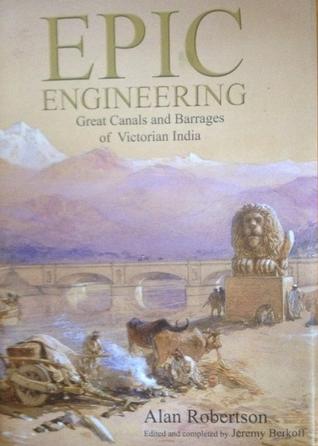A book follows the lives and achievements of two engineering geniuses who changed the face of irrigation in India in the 19th century.
There is a thin but bright skein that runs through, and indeed often gets obscured by, the darker history of colonial rule in India. This thread represents the work of the small but extraordinary group of colonial innovators who pushed the boundaries in a diverse range of fields — from engineering to archaeology, from botany to triangulation and mapping.
A recent book by Alan Robertson, Epic Engineering: Great Canals and Barrages of Victorian India follows the lives and achievements of Arthur Cotton (1803-1899) and Proby Cautley (1802-1871), two engineering geniuses who changed the face of irrigation in India in the 19th century. Cautley designed and built the 700-mile Ganges Canal, and Cotton harnessed for irrigation the flow of two of the great river deltas of South India – the Cauvery and Godavari.
Though contemporaries in India, and equally qualified, the two men could not have been more different in their approach to engineering problems. The book deals in some depth with the bitter public battle in England when they returned after their India postings, over the efficacy of their respective engineering designs in India.
According to Robertson, Cautley was recognised and honoured by his Victorian contemporaries, although it is Cotton who is remembered over a century and a half later in the Indian mind — celebrated as he is in writing, popular lore and public statuary in Tamil Nadu and Andhra Pradesh. In the 1930’s Cotton built the Upper and Lower Anicut to regulate and divert for irrigation the flow of water in the Cauvery and Coleroon (Kollidam) rivers. He then turned his attention to the Godavari delta, where in the 1930s the destruction of the weaving industry was exacerbated by a famine that together resulted in the death of one in four persons. The Godavari’s flow in monsoon was three times greater than the Nile in flood, Robertson writes, therefore greater the challenge. The many ingenious solutions Cotton devised to practical problems as they cropped up during the construction of the four-mile long Godavari anicut provides a flavour of the unconventional genius and the times.
In the same decades Cautely was making progress, though with some embarrassing reversals, on the Ganges canal. Later, in the adjudication of the dispute between Cautely and Cotton — who argued that the location of the headworks of the canal was wrong — a government committee sided with Cautely. However, “within a few years Cotton’s main criticism was quietly acted upon…” Robertson writes.
Historical archives and private collections in Britain still hold many stories on India including those that are already known but are waiting to be enriched with new information. Interestingly, the author of this enriched biography, Alan Robertson, was a nuclear physicist with an abiding interest in history. This led him to a post-retirement MA degree at King’s College on the mid-19th century indigo industry in India and on to the fascinating lives of the two Victorian water engineers.
Unfortunately, Robertson died before his book was published. Finding no publishers ready to accept the manuscript, it was eventually published privately by Catherine Hamilton, Robertson’s sister. Jeremy Berkoff, an irrigation expert who worked for many years with the World Bank edited and completed the manuscript.
Epic Engineering: Great Canals and Barrages of Victorian India
Alan Robertson / Beechwood Melrose Publishing, 2013, 254 pages
source: http://www.thehindu.com / The Hindu / Home> Books / by Parvathi Menon / London – June 14th, 2016
